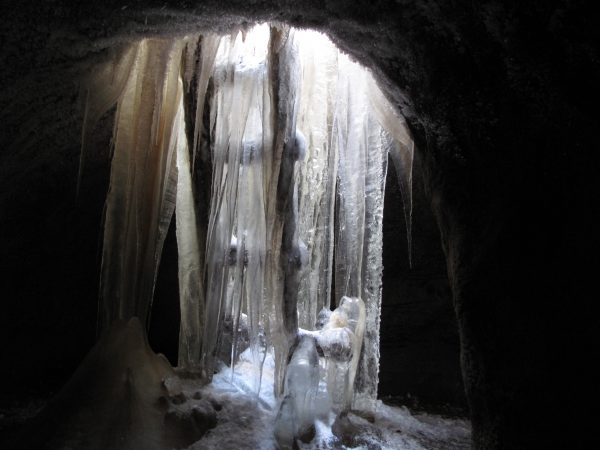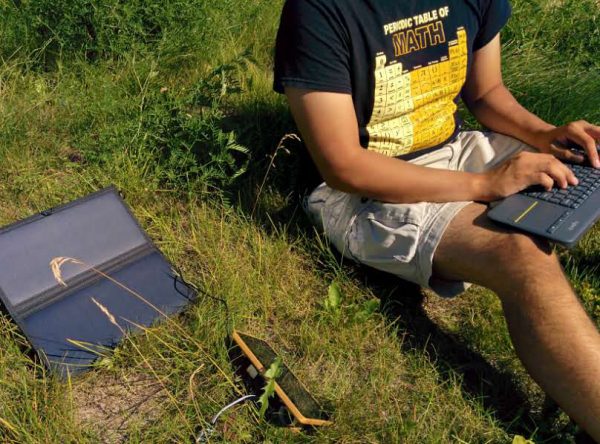Students fight ice cellar failure
October 17, 2017
Sue Mitchell
907-474-5823

Subsistence hunters across the North Slope will soon use computers to monitor temperatures in several ice cellars.
The University of Alaska Fairbanks' Geographic Information Network of Alaska has partnered with an Arctic Slope Regional Corp. subsidiary to create prototypes of the computers. Seven will be installed in spring 2018, with refinements to follow.
Ice cellars, which are dug 5 to 40 feet deep into permafrost, are the traditional method for chilling and storing subsistence game. They are logistically the only option available for remote hunters. For some ice cellar users, changes to the permafrost could put a year’s food supply in jeopardy.
The cellar monitors begin with inexpensive, single-board computers called Raspberry Pis as the base. Highly customizable, the Raspberry Pis have allowed UAF students Ianjon Brower and Samuel George to create prototypes equipped for the changing Arctic. The prototypes incorporate user-friendly, live-time graphs that display outputs from various environmental sensors, including those designed to measure humidity, temperature and air pressure.
Although the project will produce data for permafrost researchers via ground-probing sensors, the primary goal is to provide easily accessible information for users to determine their ice cellar’s health.
“We want the ice cellar owners to know what is happening in their ice cellar,” said Vanessa Raymond, principal investigator for the project, “and the prototype we design for them is customized depending on their access to the internet and what kind of power source is available.”

What began this summer as an effort to build a single monitoring prototype has expanded to seven prototypes with design changes intended for in-town, remote and extremely remote use. This includes solar and battery-powered prototypes, and potentially, wind-powered as well.
“The Raspberry Pi will be fitted with a 7-inch touchscreen that displays a live graph updating every few hours,” said Brower, lead researcher for the project. “It will give people a basic visualization of what’s going on in the cellar in case things begin to look like it’s going to thaw and they want to move their food out.”
Brower, a senior at UAF from Utqiaġvik, gave a presentation about the computers to the North Slope Borough mayor's office and the Alaska Eskimo Whaling Commission.
Funding for the work is provided by ASRC Federal Missions Solutions, a subsidiary of the Alaska Native regional corporation for the North Slope.
The Geographic Information Network of Alaska is based at the UAF Geophysical Institute and organizes and shares geospatial data across Alaska, the Arctic and the world.


